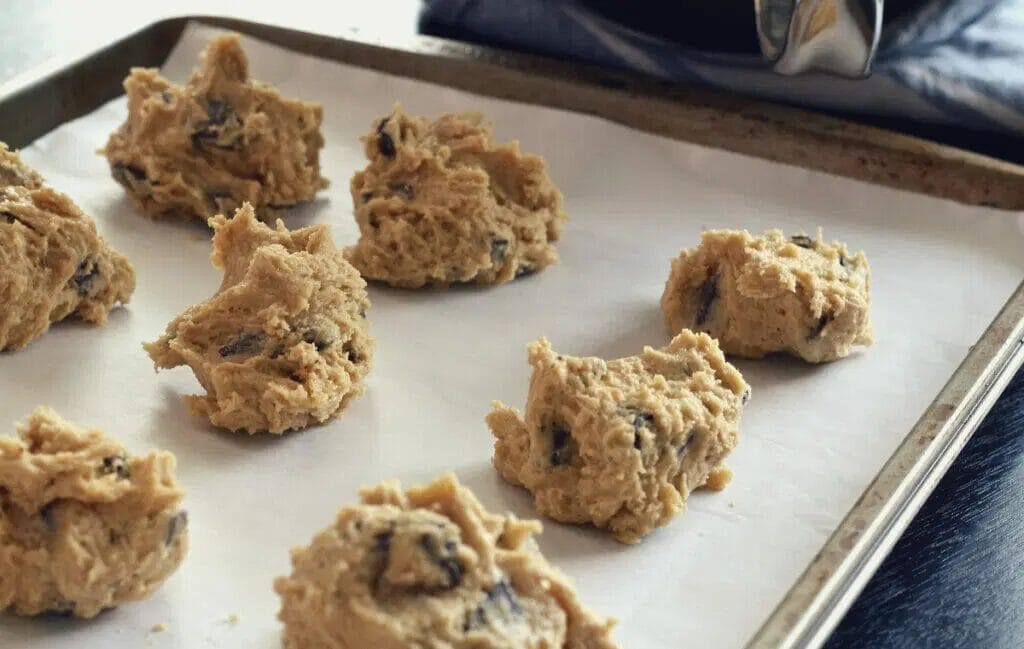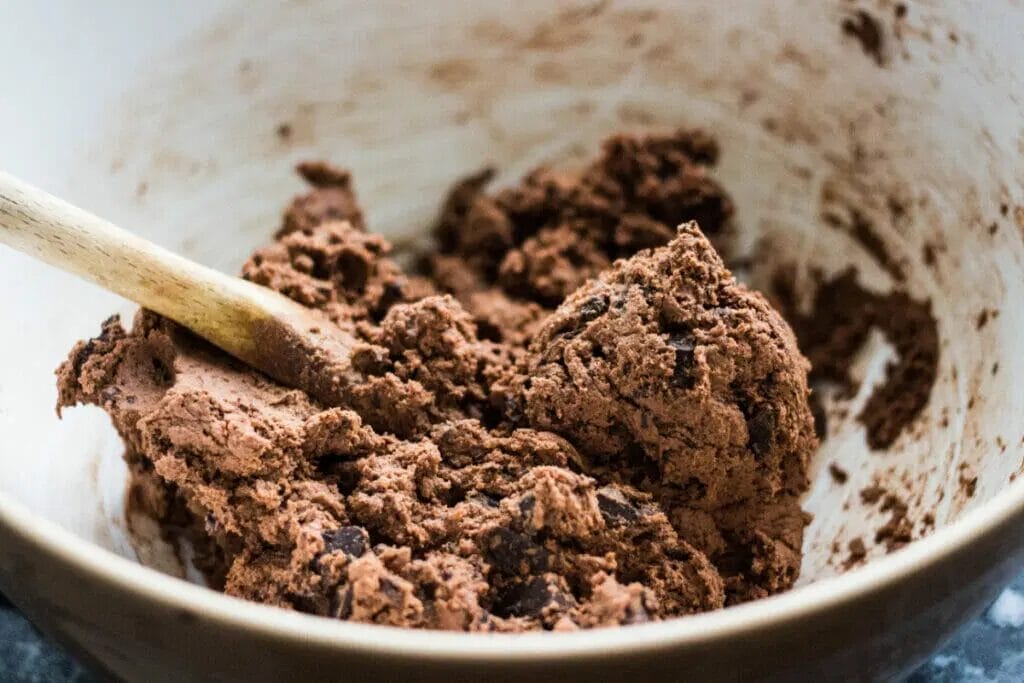As an Amazon Associate, I earn from qualifying purchases. In addition, I participate in several other affiliate programs that allow me to earn while I recommend products I love.
If you’re wondering, “why are my cookies flat?”, we’ve all been there.
You think you’ve made the perfect batch of cookies, and then, boom, they look like they’ve dripped all over the oven or at least they ended up as flat as a pancake and not that deliciously chunky cookie you expected.
So what went wrong in your cookie baking?
Why are your cookies spreading, and how can you fix flat cookies?
Here are 15 things to consider when you’re baking, some mistakes you might be making, and ways to ensure you never end up with flat cookies again (unless you want them to be!)
1. Expired Baking Soda or Powder

Baking soda and baking powder are leavening agents in our cookies, which means that they help our cookies rise.
The specific type of rising agent you use is dependent on the recipe as they are not interchangeable, but the most important thing to remember is that baking soda and baking powder can expire!
Check the date on the back of your baking soda or baking powder, and for even better results, try a newly purchased batch if you’re trying to troubleshoot why your cookies are spreading just to make sure.
2. No Baking Soda or Powder
It can be easy to accidentally leave out baking soda or powder from a recipe, particularly because it usually is just a teaspoon or two.
No rising agents…no rise!
3. Oven Not Preheated

When we bake cookies, it’s important to preheat the oven, not just because we’re trying to be annoying and add extra steps to our cookies, but because if the oven isn’t warm enough, the butter will melt before the cookie really has a chance to set.
Ensuring that your oven is preheated gives your cookies the best chance at rising correctly without the butter dragging them down!
4. Dough Not Chilled

Not all recipes call for the dough to be chilled.
However, many bakers do tend to chill the dough regardless in an effort to help stop cookie spread, so if you’re facing flat cookies, throw the dough in the fridge the next time for 2 hours ahead of time.
This helps solidify the fats, which in turn means they’ll melt more slowly in the oven.
5. Dough Not Shaped Correctly

Are you shaping your dough incorrectly?
If you create squashed circles for your dough, it will inevitably lead to more spread.
Either use a cookie scoop to make sure they’re round, or, if you’re still having issues, roll them into a more cylindrical shape!
6. They’re Overmixed

Overmixing the cookie dough can always be a cause for cookie spread, and you’ll see the phrase “do not overmix!” in a lot of recipes.
Mix until combined, but don’t keep going further.
7. Not Enough Flour

If you’ve measured flour incorrectly and you don’t have enough flour in the recipe, this can lead to cookie spread.
Luckily, this is one of the easy ways to fix cookies that spread: add more flour.
I always prefer to do a test cookie first and foremost, and if it’s too flat, I then add about 1 to 2 tablespoons of flour to the dough and repeat with a test.
If you add too much flour, the cookie might not flatten at all, which is also not what we want in most recipes.
8. Butter is Too Soft or Warm
You know how you’re supposed to use room temperature butter?
This doesn’t mean that it should be warm.
It usually takes just about 30 minutes out of the fridge for it to get to a baking room temperature.
It should still actually be a little chilled to the touch, and when you put your finger on it, you should feel some resistance even though your finger makes a dent.
If the butter is too warm when you put the dough together, the cookies will spread because the fat in the cookies will melt faster.
9. Greased Cookie Sheet

Most cookie recipes call for an ungreased cookie sheet or to be baked on something like parchment paper or a silicone mat.
This helps stop the cookies from spreading.
Picture grease on a cookie sheet like a slip and slide for your cookie to go down. We want to at least make the cookie work a little bit to spread!
10. Oven Temperature Incorrect
Even if you set your oven to what the recipe says, did you know that your oven can be off in temperature without you knowing?
Seriously, it can be 10 or 20 degrees difference, so if it tells you it’s at 400F, it might actually be at 380F, which is a problem in the finicky world of baking.
Use an oven thermometer to check the temperature and see if you need to adjust the recipes based on what the oven temperature actually is.
11. Bad Recipe
Sometimes, your cookies are flat simply because it’s either a bad recipe or the creator intended it to be flat.
Or if the cookies look puffy in the picture, but they forgot to add a step into the recipe, you could try and try again and you still won’t get the right results.
Try the other tips in here like ensuring the dough is chilled and you have fresh baking soda or powder and add more flour, but don’t get too hard on yourself.
12. Cookie Sheet is Too Warm

Did you know you’re not supposed to be bake cookies on a warm cookie sheet?
This leads to spread, because it starts heating up those fats too quickly and encourages them to melt.
Instead, let the cookie sheet cool in between batches.
Don’t run the cookie sheet under cool water because you might warp it.
13. You’ve Left Out Some Mix-Ins
If the recipe calls for something like nuts or other mix-ins and you don’t want to include them, add about a tablespoon of flour extra.
14. Weather is Humid or Rainy
If your kitchen is particularly humid, this could be introducing extra moisture into your dough which is going to cause spread.
In this case, adding flour is your best bet.
15. Margarine is Poor Quality
If your cookie recipe calls for margarine instead of butter, make sure it’s of a high quality, and buy a few different types to test if you’re doing some major baking.
Different kinds of margarine have different ratios of ingredients and usually the higher quality, the better for your puffy cookies.
